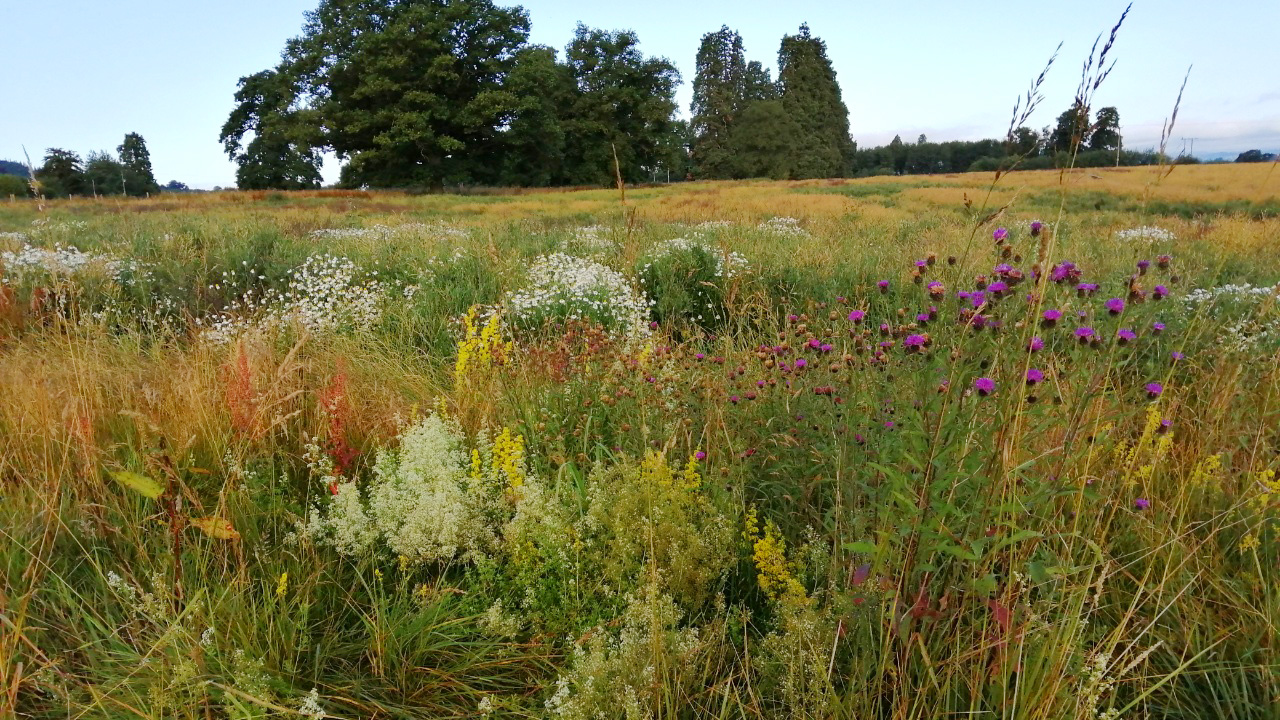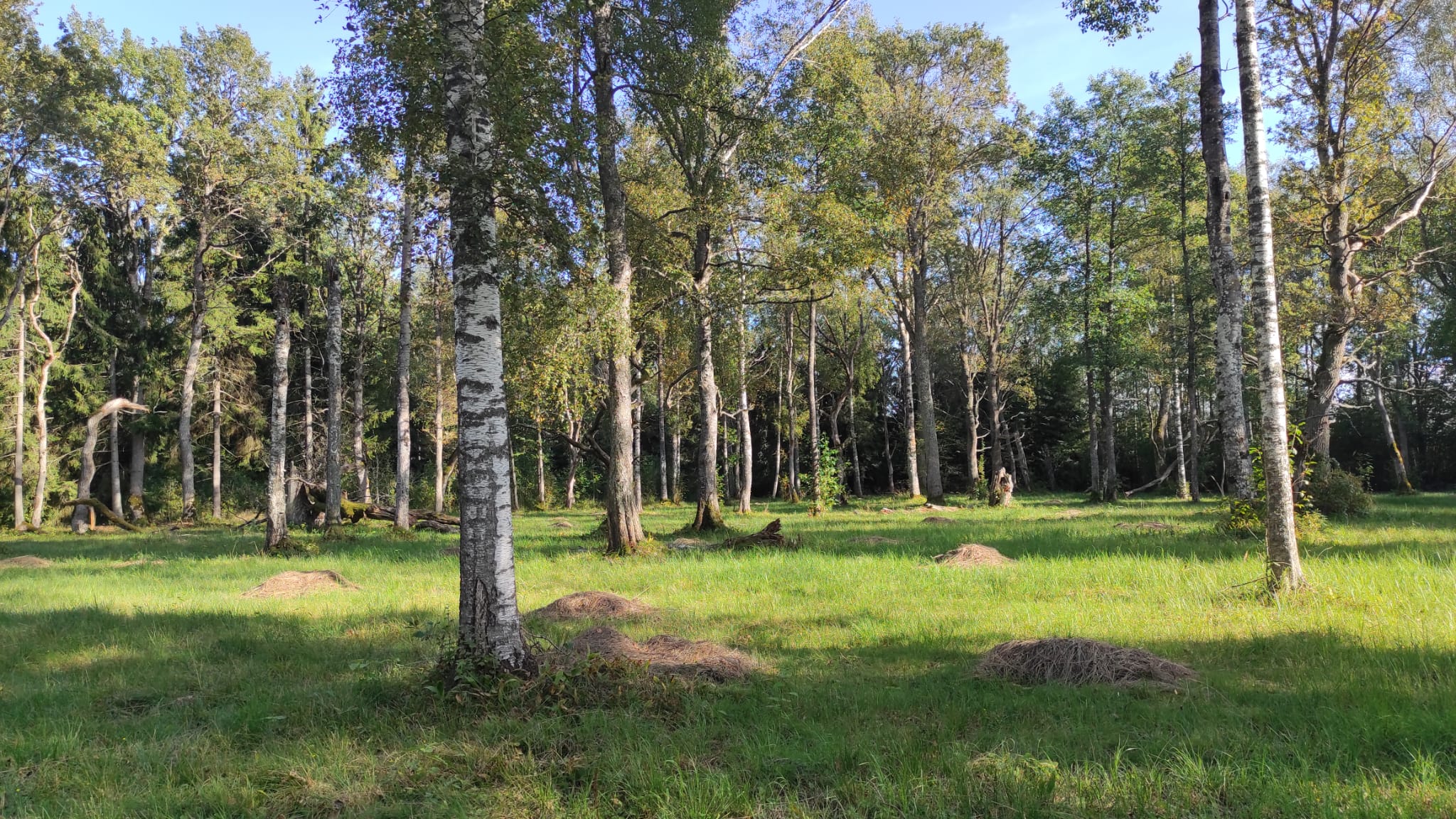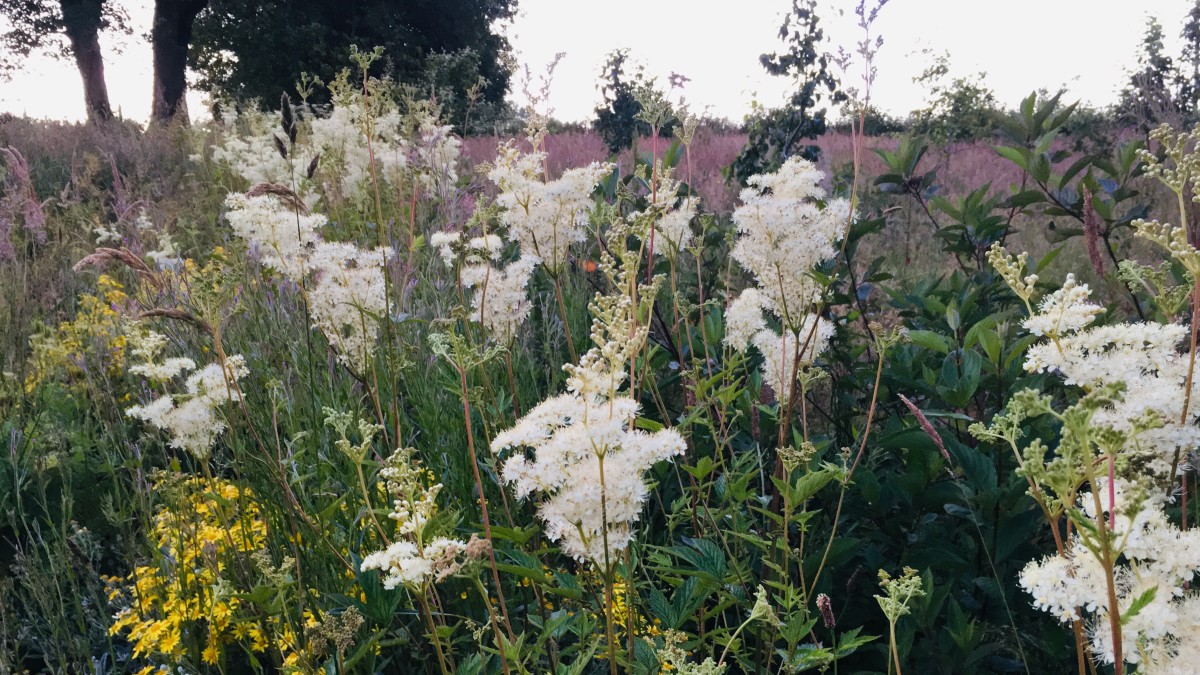These are the three principles I like to apply when thinking about wildlife forest garden design and ecology.
3 principles
- Structural complexity
- Native species diversity
- Low impact productivity
1. Structural complexity
This phrase comes from wildlife gardener John Little, a massive inspiration. The idea is that by creating structural complexity in a garden or a landscape, you create more habitat. Have a look at this video for more:
What this means is build habitat into the infrastructure of your garden.
2. Native
The larval forms of invertebrates are way more likely to native plants because they‘ve co-evolved. Have a look at Database of Insects and their Food Plants to see a list of interactions. Eg Hawthorn 197 interactions vs Japanese Maple 1 interaction

A good diversity of native plants in a Herefordshire field
What this means is use native plants where possible, in bulk eg as ground cover plants or in hedging.
3. Productivity
In the absence of large herbivores, diversity requires humans to make low impact interventions. Take the case of the wooded meadow, which has both structural complexity and low impact land management, and they are amongst the most biodiverse landscapes in the world.

Estonian wood meadow, immensely diverse & productive
What this means is that humans can be a force for good, and balanced interventions can be beneficial.
